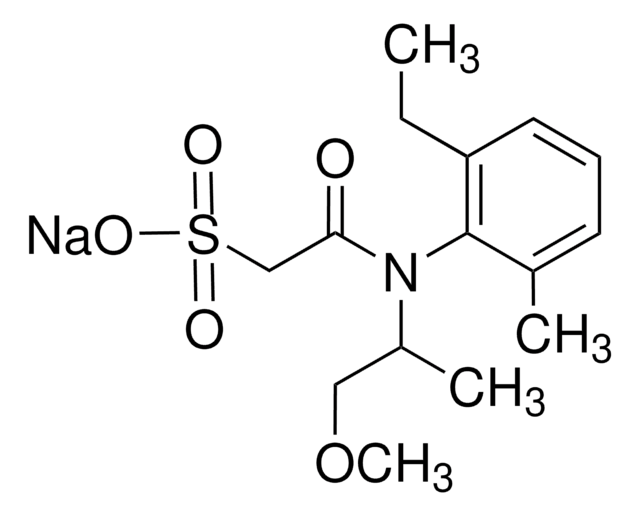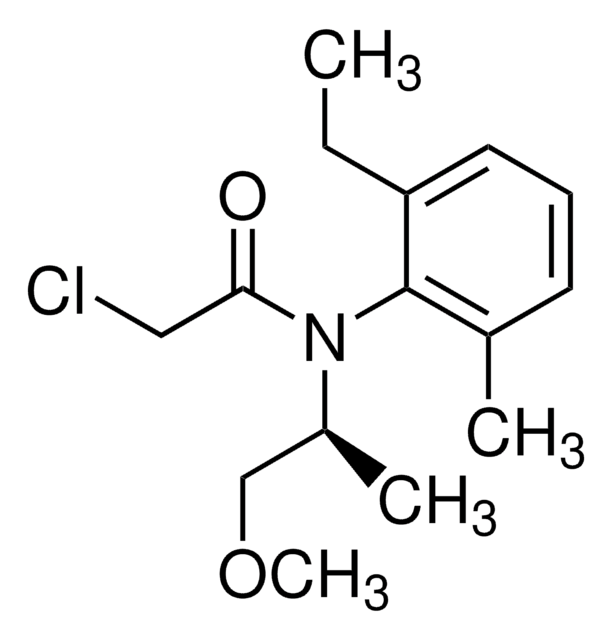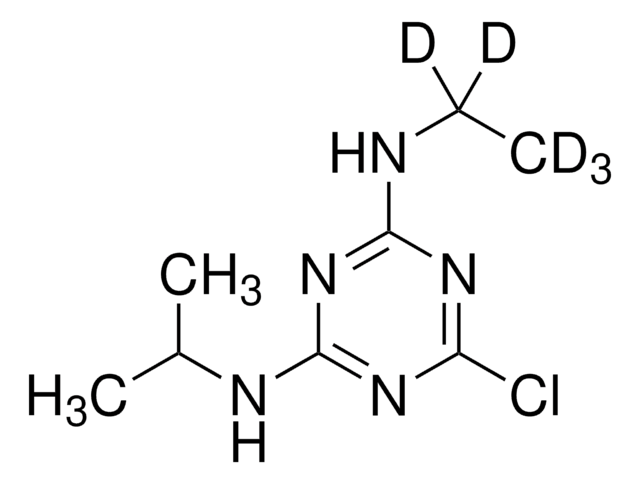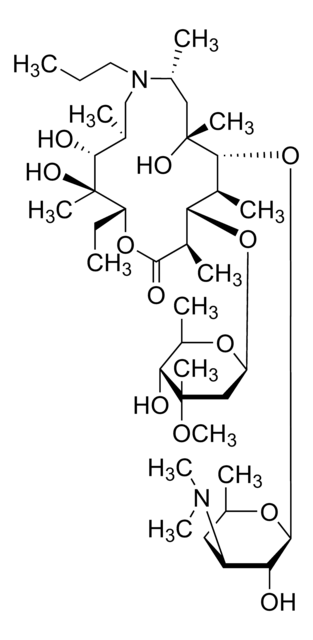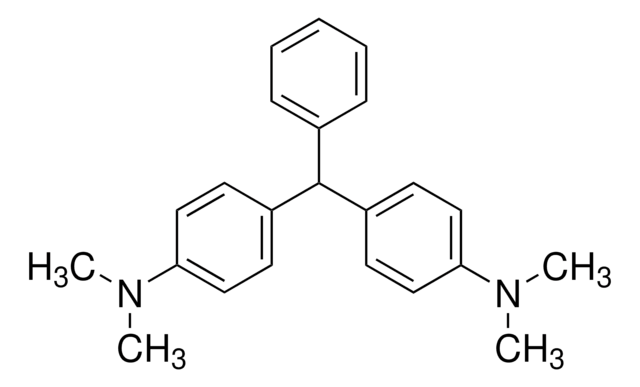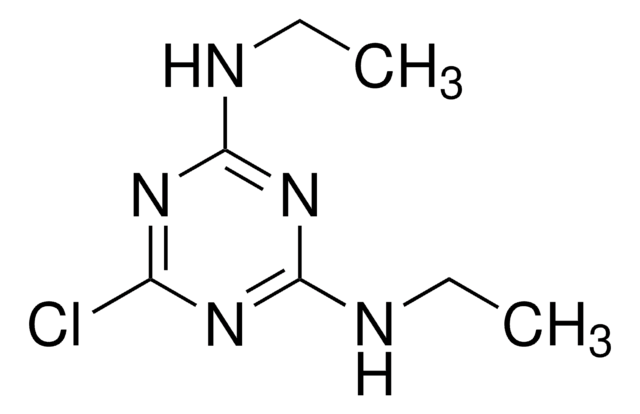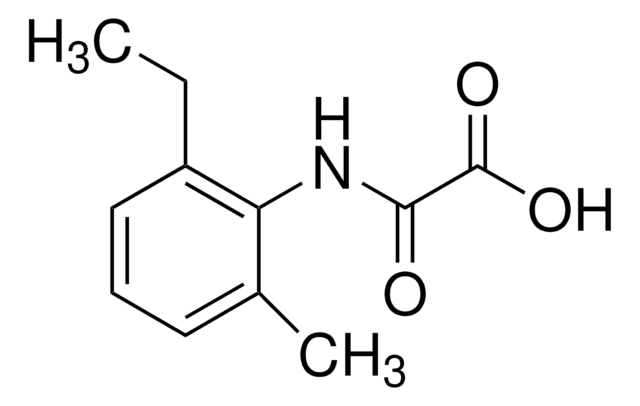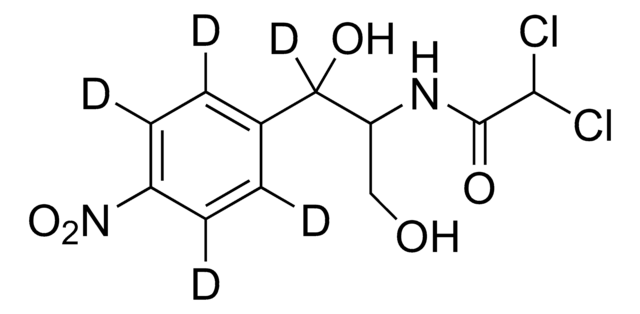34148
Metolachlor OA
PESTANAL®, analytical standard
Sinónimos:
BSTFA, TMCS, N-(2-Ethyl-6-methylphenyl)-N-(2-methoxy-1-methylethyl)oxalamic acid, [(2-Ethyl-6-methylphenyl)(2-methoxy-1-methylethyl)amino]oxo-acetic acid
About This Item
Productos recomendados
grade
analytical standard
Quality Level
product line
PESTANAL®
shelf life
limited shelf life, expiry date on the label
reaction suitability
reagent type: derivatization reagent
reaction type: Silylations
technique(s)
HPLC: suitable
gas chromatography (GC): suitable
application(s)
agriculture
environmental
format
neat
SMILES string
CCc1cccc(C)c1N(C(C)COC)C(=O)C(O)=O
InChI
1S/C15H21NO4/c1-5-12-8-6-7-10(2)13(12)16(11(3)9-20-4)14(17)15(18)19/h6-8,11H,5,9H2,1-4H3,(H,18,19)
InChI key
LNOOSYCKMKZOJB-UHFFFAOYSA-N
Categorías relacionadas
General description
Application
Other Notes
Recommended products
Legal Information
Storage Class
11 - Combustible Solids
wgk_germany
WGK 3
flash_point_f
Not applicable
flash_point_c
Not applicable
ppe
Eyeshields, Gloves, type N95 (US)
Elija entre una de las versiones más recientes:
¿Ya tiene este producto?
Encuentre la documentación para los productos que ha comprado recientemente en la Biblioteca de documentos.
Nuestro equipo de científicos tiene experiencia en todas las áreas de investigación: Ciencias de la vida, Ciencia de los materiales, Síntesis química, Cromatografía, Analítica y muchas otras.
Póngase en contacto con el Servicio técnico